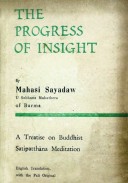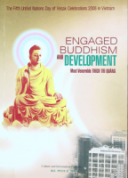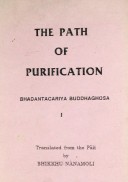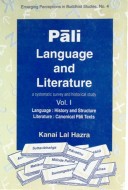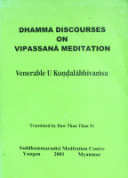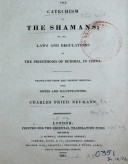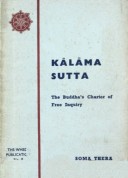Tìm Sách
Sách tiếng Anh-English >> The Progress of Insight
Thông tin tra cứu
- Tên sách : The Progress of Insight
- Tác giả : U Sobhana Mahathera
- Dịch giả : Mahasi Sayadaw
- Ngôn ngữ : Anh
- Số trang : 37
- Nhà xuất bản : The Forest Hermitage-Ceylon
- Năm xuất bản : 1965
- Phân loại : Sách tiếng Anh-English
- MCB : 1210000003588
- OPAC :
- Tóm tắt :
TRANSLATOR’S FOREWORD
To present to the reading public a treatise on Buddhist Meditation needs no word of apology today. In wide circles of the West, Buddhist meditation is no longer regarded as a matter of purely academic or exotic interest. Under the stress and complexity of modern life the need for mental and spiritual regeneration is now widely felt, and in the field of mind’s methodical development the value of Buddhist Meditation has been recognized and tested by many.
It is, in particular, the Buddha’s Way of Mindfulness (Satipattbãna) that has been found invaluable because it is adaptable to, and beneficial in, widely different conditions of life. The present treatise is based on this method of cultivating mindfulness and awareness, which ultimately aims at the mind’s final liberation from Greed, Hatred and Delusion.
The author of this treatise, the Venerable Mahasi Sayadaw (U Sobhana Mahãthera), is a Buddhist monk of contemporary Burma and an eminent Meditation Master. A brief sketch of his life is included in this volume. The path of meditation described in these pages was and still is, taught by him in his meditation centre called “Thatbana Yeiktha”, at Rangoon, and is also set forth in his lectures and books in the Burmese language.
The framework of the treatise is provided by the classical Seven Stages of Purification (satta-visuddhi), just as in Buddhaghosa Acariy a’s famous “Visuddhi – Magga”. On gradually reaching these stages, various phases of Insight Knowledge (nãna) are developed, leading on to the stages of ultimate liberation. The approach followed is that of “Bare Insight” (sukkha-vipassanã) where, by direct observation, one’s own bodily and mental processes are seen with increasing clarity as being impermanent, liable to suffering, and without a self or soul. The meditational practice begins with a few selected subjects of body-contemplation, which are retained up to the very end of the road. With the gradually increasing strength of mindfulness and concentration the range widens and the vision deepens until the insight-knowledges unfold themselves in due order, as a natural outcome of the practice. This approach road to the ultimate goal of Buddhist meditation is called Bare Insight because insight into the three Characteristics of Existence is made use of exclusively here, dispensing with the prior development of full concentrative absorption (jhana). But nevertheless, and it hardly needs mention, here too a high degree of mental concentration is required for perseverance in the practice, for attaining to Insight-Knowledge, and for reaping its fruits.
As stated in the treatise itself (p. 3), it is not the author’s purpose to give a detailed introduction into the practice for the use of beginners. The foremost concern in this work is with a stage where, after diligent preliminary practice, the insight knowledges have begun to emerge, leading up to the highest crest of spiritual achievement, Arahantship (Sainthood). Of the basic exercises, the treatise gives only a brief indication, in Chapter II, section (a). Detailed instruction about these may be gathered by the student from the Author’s “Discourse on the Basic Practice” or the Translator’s book “The Heart of Buddhist Meditation.” Also a knowledge of the Buddha’s original “Discourse on the Foundations of Mindfulness” (Satipatthãna Sutta) will be indispensable.
This treatise was first written in the Burmese language and later, in 1950, a Pali version of it was composed by the Author. As the treatise deals chiefly with the advanced stages of the practice, it was originally not intended for publication. Handwritten or typed copies of the Burmese or Pali version were given only to those who, with some measure of success, had concluded a strict course of practice at the meditation centre. For the use of meditators from foreign countries, only a few cyclostyled sheets in English, briefly describing the phases of insight-knowledge, were issued instead of the treatise itself. This was done to enable the meditator to identify his personal experience with one or other of the stages described, so that he might direct his further progress accordingly, without being diverted or mislead by any secondary phenomena that may have appeared during his practice.
In 1954, the Venerable Author agreed to a printed edition of the Pali version in Burmese script, and after this first publication he also permitted, at the Translator’s request, the issue of an English version. He had the great kindness to go himself carefully through the draft translation and the Notes, with the linguistic help of an experienced Burmese lay meditator, U Pe Thin, who for many years had ably served as an interpreter for meditators from foreign countries. The Translator’s gratitude is due to both his Venerable Meditation Master, the Author, and to U Pe Thin.
The Pali original of the treatise is a notable contribution to modern Pali literature and has therefore been included in this volume, for the benefit of those conversant with the language.
The publication of this work has been made possible by the donation of a devout Buddhist lady, Mme Osowska, who has defrayed the entire cost, in memory of the late Brahmacari S. Osowski, a keen devotee of Satipaftbana. May the merit of the Dhamma-gift be an aid on his Path to Ultimate Liberation.
Forest Hermitage
Kandy, Ceylon Nyanaponika Thera
On the Full-moon Day of
June (Poson) 1965
CONTENTS
Translator’s Foreword
Table of Contents
THE PROGRESS OF INSIGHT
THROUGH THE STAGES OF PURIFICATION (English Translation)
Introduction
- PURIFICATION OF CONDUCT (sila-visuddhi)
- PURIFICATION OF MIND (citta-visuddhi)
- The Method of Insight in brief
- The Purification of Mind
- PURIFICATION OF VIEW (ditthi-visuddhi)
- Analytical Knowledge of Body and Mind (nãma-rũpa-pariccheda-nãna)
- PURIFICATION BY OVERCOMING DOUBT (kankha-vitarana-visuddhi)
- Knowledge by discerning Conditionality (paccaya-pariggaha-nana)
- Knowledge by Comprehension (sammasana-nana)
- Knowledge of Arising and Passing Away (udayabbaya-nãna) in its weak stage, involving
The Ten Corruptions of Insight (vipassanupakkilesa)
- PURIFICATION BY KNOWLEDGE AND VISION OF WHAT IS PATH AND NOT-PATH (maggãmagga -nanadassana-visuddhi)
- PURIFICATION BY KNOWLEDGE AND VISION OF THE COURSE OF PRACTICE (patipadã-nãnadassana-visuddhi) (including the final stage of the Knowledge of Arising and Passing Away)
- Knowledge of Dissolution (bhanga-nana)
- Awareness of Fearfulness (bhayatupatthãna-nãna)
- Knowledge of Misery (ãdĩnava-nana)
- Knowledge of Disgust (nibbidã-nãna)
- Knowledge of Desire for Deliverance (muncitu-kamyatã-nãna)
- Knowledge of Re-observation (patisaảkhãnupassana-nãna)
- Knowledge of Equanimity about Formations (sankhãrupekkhã-nãna)
- Insight leading to Emergence (vutthãnagãminỉ-vipassanã-nãna)
- Knowledge of Adaptation (anuloma-nana)
- Maturity Knowledge (gotrabhu-nãna)
- PURIFICATION BY KNOWLEDGE AND VISION (nãụadassana-visuddhi)
- Path Knowledge (magga-nãna)
- Fruition Knowledge (phala-năna)
- Knowledge of Reviewing (paccavekkhana-nana)
- Attainment of Fruition (phala-samãpatti)
- The Higher Paths and Fruitions
Notes to the English translation
Literature
The Venerable Mahãsi Sayadaw. A Short Biography
 Facebook
Facebook
 Google
Google
 Google+
Google+
